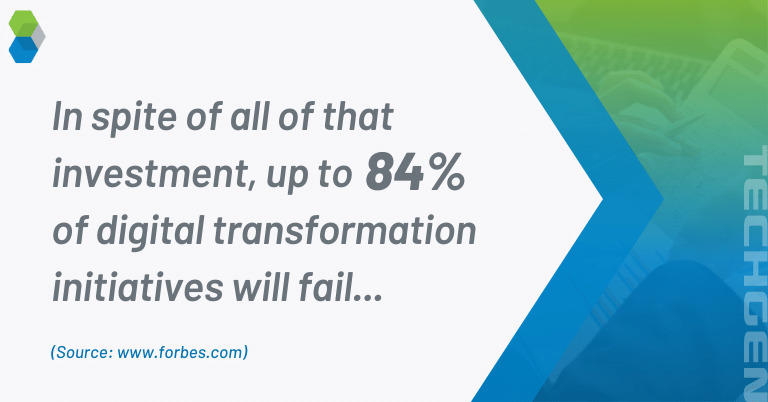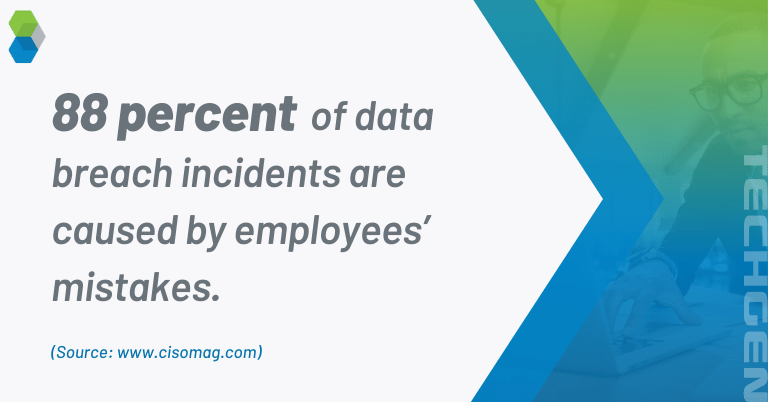Today’s organizations must keep modernizing their processes by leveraging cutting-edge digital technologies to meet growing customer and employee expectations.
However, the road to digital innovation is paved with many obstacles, and striking a balance between innovation and risk is one of them.
Digital Innovation Is Inherently Risky but Necessary
There’s a good reason why so many organizations resist change: innovation is inherently risky. Whenever outdated systems and processes are replaced with modern alternatives, issues can happen.
These issues include everything from temporary instability to higher-than-expected expenses to heightened exposure to cybersecurity threats.
To avoid these and other issues, some organizations delay innovation as much as possible, giving their competitors an opportunity to get ahead of them. When that happens, negative reviews often follow, and the loss of customer loyalty is difficult to reverse.
Clearly, digital innovation is necessary, but it must be approached the right way so that it doesn’t create even more risk.
Balancing Digital Innovation and Risk
Organizations worldwide are expected to spend around $3.3 trillion on digital transformation projects by 2025. In spite of all of that investment, up to 84 percent of digital transformation initiatives will fail, according to Forbes.

Understanding the main characteristics of successful and failed digital transformation projects can help you innovate at the right pace and solve all challenges you encounter on your journey.
Five Steps to Successful Digital Innovation
1. Set Realistic Expectations and Goals
All organizations that have ever achieved digital transformation success had embarked on their digital transformation journeys with realistic expectations and goals.
To set expectations and goals that can be accomplished in a realistic amount of time and for an acceptable amount of money, it’s paramount to avoid focusing solely on the desired outcome.
Instead, you need to understand where you are and map out the entire path from there to the end destination, paying close attention to all the systems, processes, and people that will be affected by the change.
2. Have the Right Mindset
Resistance to digital innovation can come from both employees and stakeholders, and it can make even realistic digital transformation goals difficult to achieve.
To prevent resistance to change from ruining your plans, your entire organization should have the right digital transformation mindset and see innovation as something positive and necessary.
The leadership should lead the way by being united and clearly communicating to employees the reasons for change and the steps needed to achieve it.
3. Make the Right Technology Choices
Regardless of which part of your organization you decide to digitally transform, you will have multiple competing technology offerings to choose from, each with its own strengths and weaknesses.
By making the right technology choice, you can greatly decrease the risk of business disruption. By making the wrong choice, you can greatly increase it.
The right technology choice is one that reflects your needs and requirements and meets them as completely as possible. To make it, you must know what kind of technology offerings are available in the first place—something a trusted IT partner can help you with.
4. Help Employees Increase Their Technical Know-How
A joint study from Stanford University Professor Jeff Hancock and security firm Tessian revealed that 88 percent of data breach incidents are caused by employees’ mistakes.
Whenever an organization implements a new digital tool or upgrades a part of its information technology infrastructure, the risk of an employee-caused data breach goes up unless the organization ensures that all employees have the technical know-how necessary to adapt to the new reality.
5. Acquire the Necessary IT Talent
It’s impossible to complete any digital transformation project without the necessary IT talent. Seasoned IT professionals bring to the table indispensable skills and experience that can go a long way in steering the project toward success.
Unfortunately, acquiring the necessary IT talent can be a challenge in of itself, especially for smaller organizations that can’t justify or afford to staff an in-house IT department.
Overcome This Challenge...
Organizations are increasingly often turning to managed service providers like us at TechGen. With our expert assistance, striking a balance between digital innovation and risk is something any organization can accomplish
Call 612-279-2400 right now or fill out our contact form to book a quick one-on-one call that fits your schedule for more information.


